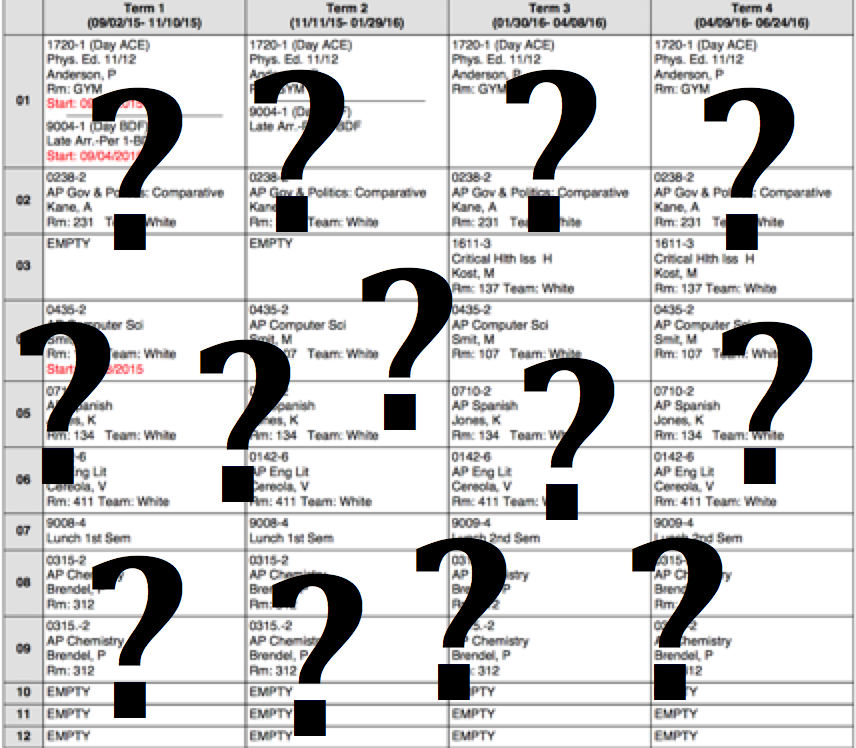The Scheduling Puzzle
September 27, 2015
All students who attend Ward Melville, or any high school for that matter, know the agonizing moments of getting their schedules. Everyone hopes that their schedule has no errors, no need for class swap-outs, and/or that they get the electives and classes they applied for. This great scenario of flawlessness happens very rarely and the majority of students have to spend an elongated amount of time waiting to meet with a guidance counselor who can hear their cases, make a judgement about whether a change can or should be made, and then make a physical change in the schedule. Most students ache from headaches, but they are not the only ones experiencing the agony. The guidance counselor now has to sit and work with more students throughout the day and make even more changes to even more schedules. Their heads throb just as much. With the headache, however for students, comes a thought: how do these schedules come to be? How are the things that command our school day, the friends we become closer with, and, perhaps, (with further thought) our path in life after high school created?
The process starts with input of requests for courses by the students. These requests are then read through and placed into the Infinite Campus. Many students know this and have gone through this process. The course requests are then available for students to see on the Parent Portal, and any necessary adjustments are made by June of that year. Then, it moves past what most students know. After this point, there are just the days of summer, and soon, incoming, the antagonizing days when schedules are set to come out. The perspective of the students differ at this point from that of the administrators of the school and the guidance department. Unlike them, we students are left clueless about how the pieces of our scheduling puzzling will fit together.
The guidance and scheduling departments go through all of the requests (with the help of some technology of course) and calculate how many students have enrolled in each subject and class, how the classes need to be staffed, and how many classes there need to be. After this, the requests are run through the scheduling program on Infinite Campus. First, senior requests are entered into the program, and the program is run until the highest percentage of matches between students and their course requests has been reached. From there, the juniors and their requests are entered. After that, sophomores and their requests are entered into the program and it is run yet again. After these steps, all of the schedules are developed. This system has been in place in the Three Village School District for around a decade, when Infinite Campus was first introduced to the district.
This process is done for all students in Ward Melville, with its tremendous population of students. Students are only focused on an individual basis when criticizing their schedules. Each student in the program is represented, but many need to make changes in order to fit the individual needs that can’t be handled by the programming of Infinite Campus. Creating schedules for hundreds or even maybe thousands of students is a tremendous task-a huge puzzle.












